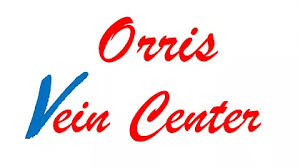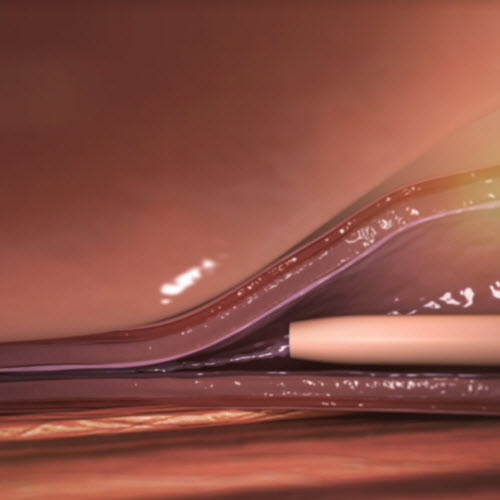Vein Treatment
At Orris Vein Center, we specialize in treating varicose veins, spider veins, and the symptoms that come with them.
Vein Disease, also know as “Venous Insufficiency,” is very common. More than 30 millions Americans suffer from the venous disease but only 10 percent seek treatment for it. Typically, the majority of people that have vein disease have it because of genetics. If one parent has vein disease or varicose veins, you have a 50% chance of having it as well. If both parents have vein disease, the chances of you suffering from it as well increase to a 90% chance.

What is Venous Insufficiency?
Contributing Factors
Symptoms of Vein Disease
Diagnosis
Treatment Options
WHAT IS CHRONIC VENOUS INSUFFICIENCY?
Contributing Factors to Vein Disease include:
- Genetics (Heredity)
- Gender
- Age – as we age, we are more susceptible to disease
- Obesity or being overweight
- Multiple pregnancies
- History of DVT (deep vein thrombosis) and blood clots
- Sitting or Standing for prolonged periods of time.


Symptoms of Vein Disease include:
- Tired, Heavy Achy Legs
- Leg Swelling
- Burning or Itching of the Skin
- Night Cramps
- Restless Legs
- Varicose Veins
- Discoloration of the Skin
- Ulcers or open wounds
HOW DO WE DIAGNOSE AND TREAT VEIN ISSUES?
The first step to diagnosing vein disease is to perform a complete ultrasound scan of both legs. Our highly trained registered vascular technician does this but using a color Doppler ultrasound. This exam is a quick and painless way to check blood flow. The color Doppler helps visualize the movement, speed, and direction of blood flow in color, giving us a good picture of what is happening inside your veins.
If the ultrasound shows that you have reflux (your blood is flowing backward), then we contact your insurance company to start verifying your benefits. Once we hear back from them, we will contact you to schedule your procedures. If you are a self-pay patient or are a part of our Vickery Direct Care program, your treatments can begin immediately.

OUR VEIN TREATMENTS OPTIONS

Radiofrequency Ablation
A procedure called radiofrquency ablation (RF) is a minimally invasive procedure performed in our office to treat vein disease or chronic venous insufficiency. Using ultrasound guidance, we place a thin catheter into the diseased vein, much like an IV. The catheter delivers radiofrequency energy and closes the vein down with heat. The heat causes the wall of the vein to shrink and close. The blood is re-routed to the healthy veins. This procedure is performed using local anesthesia. There is little to no downtime. Most patients can resume normal activity directly after the procedure.

VARITHENA
Varithena ® is the first FDA approved injectable foam treatment used to treat venous reflux and varicose veins. With only one needle stick, we inject a chemical foam into the diseased veins causing them to collapse and then dissolve. This procedure only takes about 30 minutes, and you can resume normal activities immediately.


VENASEAL
The VenaSeal™ closure system offers relief for patients suffering from chronic venous insufficiency by using a proprietary medical adhesive (a “super glue”) to permanently close the diseased vein. With no need for heat, the VenaSeal procedure delivers a comfortable patient experience and immediate vein closure, with the results you have come to expect.
After sclerotherapy, treated veins tend to fade within a few weeks, although occasionally it may take a month or more to see the full results. In some instances, several sclerotherapy treatments may be needed.

SCLEROTHERAPY
Sclerotherapy is a cosmetic procedure used to treat spider veins, the smaller blue veins that are easily seen on the legs. The procedure involves injecting a solution directly into the vein. The sclerotherapy solution causes the vein to scar, forcing blood to reroute through healthier veins. The collapsed vein is reabsorbed and eventually fades.
After sclerotherapy, treated veins tend to fade within a few weeks, although occasionally it may take a month or more to see the full results. In some instances, several sclerotherapy treatments may be needed.

COMPRESSION STOCKINGS:
Compression stockings are specially designed to apply pressure to your lower legs, helping to maintain blood flow and reduce discomfort and swelling. They work by compressing the leg with graduated compression (strongest at the ankle and decreasing going up the leg). The compression stocking works by gently squeezing the stretched vein walls together, allowing the valves to close. This restores normal blood flow and improves overall circulation.
Compression aids in proper healing after vein procedures are performed. Because of this, we request that they be worn for a specific length of time after each treatment.
It is also advised that compression stockings should be used as a preventative and maintenance garment. If you are sitting for long periods of time, for example on a long plane ride or car ride, compression stockings should be worn to help the blood to circulate effectively.



